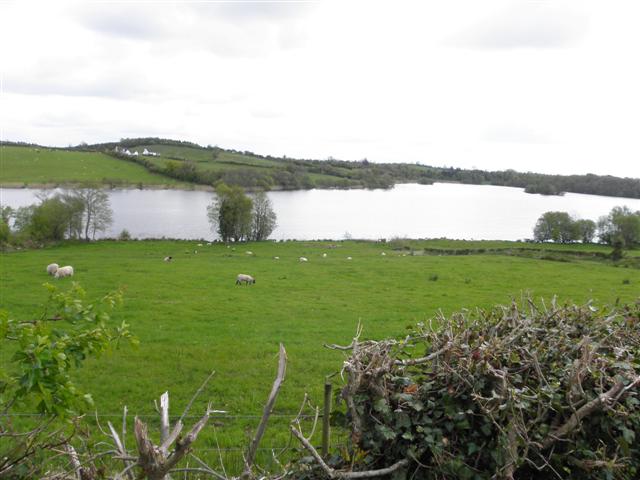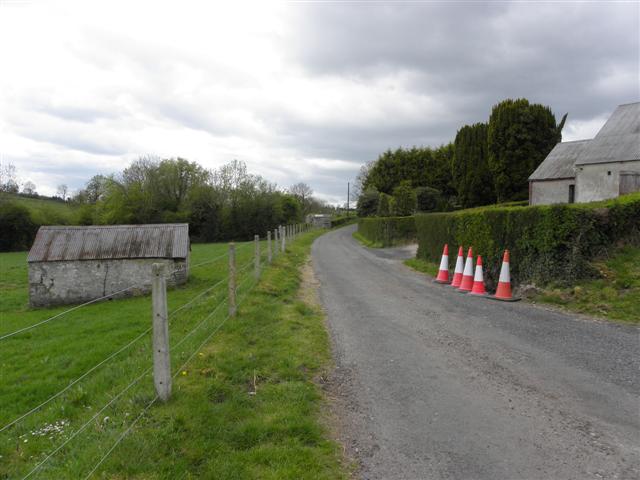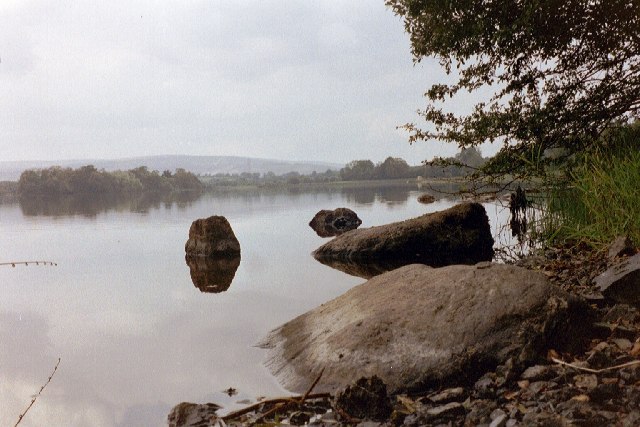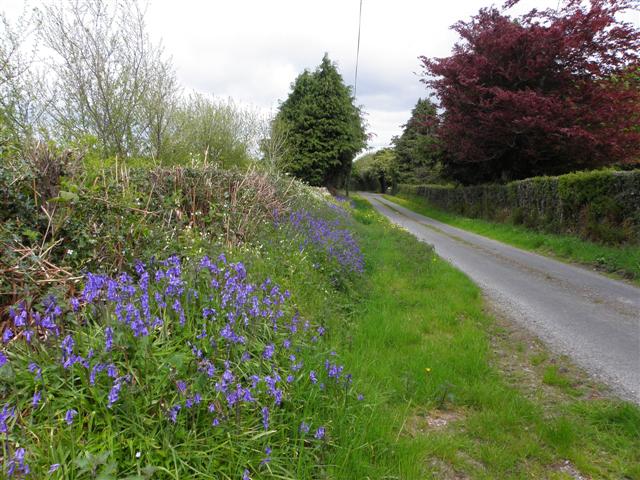|
Cuillaghan
Cuillaghan is a townland in the civil parish of Drumlane, Barony of Loughtee Lower, County Cavan, Ireland. Etymology The townland name is an anglicisation of a Gaelic placename, ''Coilleachán'', meaning 'The Underwood' (i.e. a place full of shrubs). The local pronunciation is 'Kull-Ya-Han'. The earliest surviving mention of the townland is on the 1609 Ulster Plantation Baronial map of the Barony of Loughtee, where it is spelled ''Cullagan''. A 1610 grant spells it as ''Cullagan''. The 1654 Commonwealth Survey spells it as ''Quillaghan''. The 1660 Books of Survey and Distribution spell it as ''Quillehan''. The 1661 Inquisitions spell it as ''Callaghan alias Callagan'' and ''Quillaghan''. Geography Cuillaghan is bounded on the north by Corraquill and Dernagore townlands (both situated in the Northern Ireland part of the United Kingdom), on the east by Camalier and Tomassan townlands, on the south by Ardue townland and on the west by Annagh, County Cavan, Cloncoohy, which is ... [...More Info...] [...Related Items...] OR: [Wikipedia] [Google] [Baidu] |
Tomassan
Tomassan is a townland in the civil parish of Drumlane, Barony of Loughtee Lower, County Cavan, Ireland. Etymology The townland name is an anglicisation of a Gaelic placename, ''Tuaim Easain'', meaning either 'The Tomb of Easan' or "The Tomb of the Little Waterfall". The earliest surviving mention of the townland is on the 1609 Ulster Plantation map of the Barony of Loughtee, where it is spelled ''Tomasan''. A 1610 grant spells it as ''Tomassan''. The 1641 Rebellion Depositions spell it as ''Tomasin''. The 1654 Commonwealth Survey spells it as ''Tuomashan''. The 1660 Books of Survey and Distribution spell it as ''Tommassen''. The 1661 Inquisitions spell it as ''Tumason''. The 1790 Cavan Carvaghs list spells the name as ''Tomessan''. Geography Tomassan is bounded on the north by Camalier townland, on the east by Drumrush townland, on the south by Ardue and Tomkinroad townlands and on the west by Cuillaghan townland. Its chief geographical features are the Rag River, Cuilla ... [...More Info...] [...Related Items...] OR: [Wikipedia] [Google] [Baidu] |
Killywilly
Killywilly is a townland in the civil parish of Drumlane, Barony of Loughtee Lower, County Cavan, Ireland. Etymology The townland name is an anglicisation of a Gaelic placename, either ''Coill Mhuilinn'', meaning 'The Wood of the Mill', or ''Coillidh Bhuaile'', meaning 'The Wood of the Cattle-Fold', or ''Coill an Bhealaigh'', meaning ‘The Wood of the Pass’. The first name is more likely as there was a mill there at least as early as the 17th century and most of the early placename spellings are consistent with this. The earliest surviving mention of the townland is on the 1609 Ulster Plantation map of the Barony of Loughtee, where it is spelled ''Killivelly''. A 1610 grant spells it as ''Keilenolin''. The 1654 Commonwealth Survey spells it as ''Killevullin''. The 1660 Books of Survey and Distribution spell it as ''Killycullen''. The 1661 Inquisitions spell it as ''Kelewolin'' and ''Killewooley''. The 1790 Cavan Carvaghs list spells the name as ''Killevally''. Geography K ... [...More Info...] [...Related Items...] OR: [Wikipedia] [Google] [Baidu] |
Ardue
Ardue is a townland in the civil parish of Drumlane, Barony of Loughtee Lower, County Cavan, Ireland. Etymology The townland name is an anglicisation of a Gaelic placename, ''Ard Aodha'', meaning 'The Height of Hugh'. The local pronunciation is ' ''Are-Dew'' '. The earliest surviving mention of the townland is on the 1609 Ulster Plantation map of the Barony of Loughtee, where it is spelled ''Ardea''. A 1610 grant spells it as ''Ardea''. A 1611 grant spells it as ''Ardea''. The 1654 Commonwealth Survey spells it as ''Ardy''. The 1660 Books of Survey and Distribution spell it as ''Ardy''. The 1661 Inquisitions spell it as ''Ardea'' and ''Ardeagh''. The 1790 Cavan Carvaghs list spells the name as ''Ardue''. A sub-division of the townland was named Culnagolly (Gaelic, possibly ''Cúil na Gualaigh'', meaning 'The Corner of the Charcoal', or ''Coill na Gualaigh'', meaning 'The Wood of the Charcoal'). On the 1609 Baronial map it formed a separate townland from Ardue. An Inquisition da ... [...More Info...] [...Related Items...] OR: [Wikipedia] [Google] [Baidu] |
Camalier
Camalier is a townland in the civil parish of Drumlane, Barony of Loughtee Lower, County Cavan, Ireland. Etymology The townland name is an anglicisation of a Gaelic placename, ''Cam Ladhar'', meaning "The Crooked Fork" (either of a river or a road). The local pronunciation is ''Kam-Ah-Leer''. The earliest surviving mention of the townland is on the 1609 Ulster Plantation map of the Barony of Loughtee, where it is spelled ''Camlier''. A 1610 grant spells it as ''Camlier''. The 1641 Rebellion Depositions spell it as ''Comliere''. The 1654 Commonwealth Survey spells it as ''Camleyer''. The 1660 Books of Survey and Distribution spell it as ''Camleare''. The 1661 Inquisitions spell it as ''Camleer''. Geography Camalier is bounded on the north by Corraquill and Tirgormly townlands, on the east by Drumrush townland, on the south by Tomassan townland and on the west by Cuillaghan townland. Its chief geographical features are a small rivulet, woods & plantations, several drumlin hills w ... [...More Info...] [...Related Items...] OR: [Wikipedia] [Google] [Baidu] |
Annagh, County Cavan
Annagh is a townland in the Parish of Tomregan, Barony of Tullyhaw, County Cavan, Ireland. Etymology On the 1609 Ulster Plantation Baronial map it is split into two townlands named ''Shannaontra'' and ''Shannaititr''. In a 1610 grant they are spelled ''Tanaghyeightra'' and ''Tanaghwotra''. In an Inquisition dated 20 September 1630 the two townlands were spelled ''Townaeiateragh'' and ''Tawnaowteragh''. In the 1652 Commonwealth Survey the spelling was ''Tenaghoghtragh'' and ''Tenaghightragh''. On the Down Survey map of 1655 these townlands were merged into one and it is named ''Annagh''. A 1666 grant spells the names as ''Anagh alias Tannaghyeitragh alias Tannaghowoteragh''. William Petty's 1685 map spells it as ''An''. The usual meaning suggested for the place name is that Annagh is an anglicisation of the Irish language placename "Eanach" which means 'A moor or marsh'. However it is more likely that Annagh is an abbreviation of 'Tannagh' (meaning a pasture) as the older names o ... [...More Info...] [...Related Items...] OR: [Wikipedia] [Google] [Baidu] |
Alexander Montgomery (1686–1729)
Colonel Alexander Montgomery (1686 – 19 December 1729) was an Irish soldier and politician. Montgomery, of the Scots Greys cavalry, lived in Convoy House, Convoy, County Donegal, Ireland. He was born into an Ulster Scots gentry family in 1686, the second son of Major John Montgomery and his first wife Catherine, the daughter of the Reverend James Auchinleck. The Montgomerys of Convoy were part of the County Donegal branch of the Clan Montgomery. He was elected Member of Parliament (MP) for Donegal Borough in 1725 until the General Election in 1727 and was then returned for County Donegal in 1727 until his death on 19 December 1729, at the age of 43. He was buried at the Church of St. Nicholas Within the Walls, Nicholas Street, Dublin on 22 December 1729. He married Elizabeth Percy, a daughter of Colonel Henry Percy (or Piercy) of Seskin, County Wicklow. His wife predeceased him in December 1724 and was also interred at St.Nicholas on 5 January 1725. He inherited lands at Cr ... [...More Info...] [...Related Items...] OR: [Wikipedia] [Google] [Baidu] |
County Donegal
County Donegal ( ; ga, Contae Dhún na nGall) is a county of Ireland in the province of Ulster and in the Northern and Western Region. It is named after the town of Donegal in the south of the county. It has also been known as County Tyrconnell (), after the historic territory of the same name, on which it was based. Donegal County Council is the local council and Lifford the county town. The population was 166,321 at the 2022 census. Name County Donegal is named after the town of Donegal () in the south of the county. It has also been known by the alternative name County Tyrconnell, Tirconnell or Tirconaill (, meaning 'Land of Conall'). The latter was its official name between 1922 and 1927. This is in reference to the kingdom of Tír Chonaill and the earldom that succeeded it, which the county was based on. History County Donegal was the home of the once-mighty Clann Dálaigh, whose best-known branch was the Clann Ó Domhnaill, better known in English as the O ... [...More Info...] [...Related Items...] OR: [Wikipedia] [Google] [Baidu] |
George Montgomery (MP)
George Leslie Montgomery (c. 1727 – March 1787) was an Irish politician. Montgomery sat as Member of Parliament (MP) for Strabane from 1765 to 1768. He purchased the seat from John McCausland of Strabane for £2,000 after the death of the incumbent Robert Lowry when a new writ was issued for the borough on 22 October 1765. Subsequently, he represented Cavan County in the Irish House of Commons from 1768 until his death in 1787. The Cavan poll result on 2 August 1768 was Maxwell 727, Montgomery 648, Pratt 570, Newburgh 402; The poll finally closed on 11 November 1768 and the final poll was Maxwell 927, Montgomery 739, Pratt 668, Newburgh 451. When the new Parliament met in 1769, Mervyn Pratt, the defeated candidate, petitioned against the election of Montgomery on grounds of bribery, corruption and undue influence. This petition was not finally determined owing to the premature prorogation of Parliament in December 1769, so Montgomery survived and continued to represent th ... [...More Info...] [...Related Items...] OR: [Wikipedia] [Google] [Baidu] |
John Richardson (bishop Of Ardagh)
John Richardson (1580–1654) was an English bishop of the Church of Ireland. He was nominated Bishop of Ardagh on 8 April 1633 and consecrated in September that year. He was also Archdeacon of Derry from 1622 to 1634; and Archdeacon of Connor from 1639 to 1654. He left Ireland before the Rebellion of 1641 and died in London on 11 August 1654. Life He was born near Chester, entered Trinity College, Dublin, graduated M.A., and became a fellow in 1600. In the same year he was selected with James Ussher and another as lay preacher at Christ Church Cathedral, Dublin. Richardson's part was to preach on Wednesdays, and explain the prophecies of Isaiah. He later took holy orders, and was created D.D. in 1614. Richardson held many preferments. He was appointed vicar of Granard, in Ardagh, in 1610; rector of Ardsrath, Derry, in 1617; Archdeacon of Derry in 1622 (reappointed in the new charter of 1629); Prebendary of Mullaghbrack at St Patrick's Cathedral, Armagh on 14 May 1633; ... [...More Info...] [...Related Items...] OR: [Wikipedia] [Google] [Baidu] |
Strabane
Strabane ( ; ) is a town in County Tyrone, Northern Ireland. Strabane had a population of 13,172 at the 2011 Census. It lies on the east bank of the River Foyle. It is roughly midway from Omagh, Derry and Letterkenny. The River Foyle marks the border between Northern Ireland and the Republic of Ireland. On the other side of the river (across Lifford Bridge) is the smaller town of Lifford, which is the county town of Donegal. The River Mourne flows through the centre of the town and meets the Finn to form the Foyle River. A large hill named Knockavoe, which marks the beginning of the Sperrin Mountains, forms the backdrop to the town. History Early history The locale was home to a group of northern Celts known as the Orighella as far back as the fourth century when the territories of Owen (later Tír Eoghain) and Connail (later Tír Chonaill - mostly modern County Donegal) were established, and Orighella were assimilated into the Cenél Conaill. With the arri ... [...More Info...] [...Related Items...] OR: [Wikipedia] [Google] [Baidu] |
County Tyrone
County Tyrone (; ) is one of the six counties of Northern Ireland, one of the nine counties of Ulster and one of the thirty-two traditional counties of Ireland. It is no longer used as an administrative division for local government but retains a strong identity in popular culture. Adjoined to the south-west shore of Lough Neagh, the county covers an area of and has a population of about 177,986; its county town is Omagh. The county derives its name and general geographic location from Tír Eoghain, a Gaelic kingdom under the O'Neill dynasty which existed until the 17th century. Name The name ''Tyrone'' is derived , the name given to the conquests made by the Cenél nEógain from the provinces of Airgíalla and Ulaid.Art Cosgrove (2008); "A New History of Ireland, Volume II: Medieval Ireland 1169-1534". Oxford University Press. Historically, it was anglicised as ''Tirowen'' or ''Tyrowen'', which are closer to the Irish pronunciation. History Historically Tyrone (then ... [...More Info...] [...Related Items...] OR: [Wikipedia] [Google] [Baidu] |









